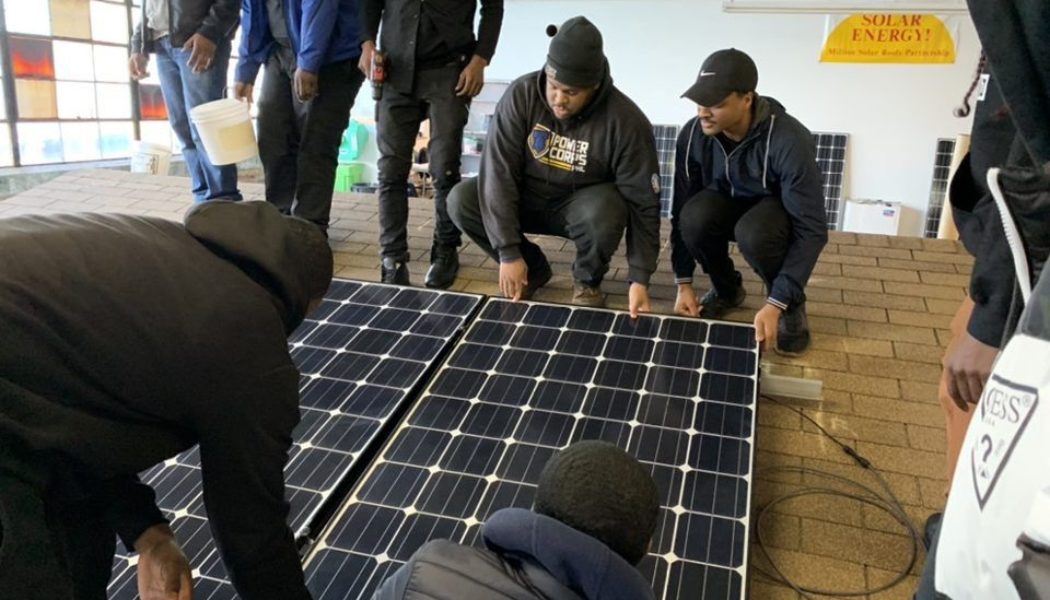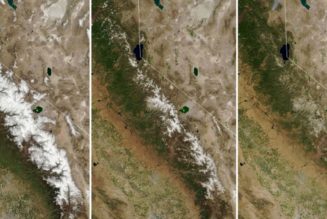If Democrats and progressives have their way, tens of thousands — or even millions — of Americans could soon find work planting urban trees, managing forests, and making homes more energy efficient and resilient to the ravages of climate change. They’d form a new “Civilian Climate Corps” that lawmakers and activists are hoping to fund through the budget reconciliation process.
For more than a decade, different proposals have floated around for a new civilian mobilization focused on climate adaption. Recently, the idea has picked up significant momentum. The most ambitious proposal yet was introduced by Senator Ed Markey (D-MA) and Alexandria Ocasio-Cortez (D-NY) in April. Joe Biden proposed a more pared down Civilian Climate Corps as part of his American Jobs Plan in March, drawing on a range of previous proposals. Most recently, lawmakers have pushed for some form of the corps to be included in upcoming budget reconciliation negotiations, sending a joint letter to House Speaker Nancy Pelosi and Senate Majority Leader Chuck Schumer in July.
The proposals differ in size and scope, but each would put people to work on federally funded projects that can minimize the toll climate change takes on the US. That might mean installing solar panels in Philadelphia, tending to sustainable urban farms in New York City, or building new career pathways for former coal communities in Appalachia. The Climate Corps would be overseen by a new body within the White House, and would also bolster the work of federal agencies like FEMA that already partner with other corps programs. And as the government establishes a new funding stream, the hope is that communities will find new projects and ways to adapt.
There are already a range of nonprofit groups doing this work, and many are already looking to the Climate Corp proposals as a way to expand. “We’re ready to go,” says Julia Hillengas, executive director of one such program called PowerCorpsPHL. “There’s 130 plus corps across the country. There’s communities that are ripe and primed to start corps … they have all the pieces there, it’s just a matter of being able to get some of that seed funding to get things off the ground.”
The idea of a civilian environmental mobilization on New Deal-era concepts was launched by President Franklin D. Roosevelt to fight the Depression — particularly, the Civilian Conservation Corps launched in 1933, which provided job training and stipends to young men. Many in Biden’s staff have taken cues from Roosevelt as the current president looks to boost the economic recovery and prepare for future shocks from the climate crisis.
Today’s corps programs generally serve two purposes: to accomplish some kind of public good, and to prepare its members for a particular vocation. In Philadelphia, PowerCorpsPHL members join “industry academies” focused on stormwater infrastructure, urban forestry, and solar energy. Since Hillengas co-founded the program in 2013, its members have planted more than 11,000 trees — an important strategy for cooling down city neighborhoods that tend to be hotter than surrounding, greener areas. Many of their alumni move on to find related work afterward — members in the solar academy, for example, might find work installing or selling solar panels.
A similar program in New York City, called Green City Force, employs public housing residents who have built sustainable farms on public housing properties to provide organic, local produce to other residents. They also retrofit homes to make them more energy efficient, a vocation in which 65 percent of the program’s graduates have gone on to find employment.
:no_upscale()/cdn.vox-cdn.com/uploads/chorus_asset/file/22761167/solar_training.JPG)
“What we hear from a lot of corps is this need for institutional support that is equitable and just and robustly funded, for making sure that they have the monetary resources to go out into the community to recruit folks, to give them the training they need, and to put them to work,” says Becca Ellison, deputy policy director at the nonprofit Evergreen Action. Evergreen, environmental activist group Sunrise Movement, and Democratic lawmakers are also asking that 50 percent of the funding and jobs for the Climate Corps go to environmental justice communities. Those are places that have been disproportionately burdened with pollution from industry, and that typically have more low-income residents and residents of color.
In the long term, advocates hope that climate mitigation and resiliency initiatives could also create new, green career paths for people who otherwise might have found work in coal, oil, or gas.
“We can kind of create this new world, this new Appalachia that has vibrant communities with good paying jobs,” says Béla Williams, a sixteen-year-old community organizer from southwest Virginia who joined the Appalachian Conservation Corps this summer. “I think a lot of communities can benefit greatly from opportunities like the Civilian Climate Corps, especially in places that have been ravaged by the coal industry or other extractive industries leaving.”
Advocates are optimistic that the package will include some kind of Civilian Climate Corps — but the size of the program is still up for debate. The Biden administration proposed $10 billion to be doled out over a decade, which might be able to fund up to 20,000 jobs a year by some estimates. Markey, Ocasio-Cortez, and Sunrise Movement have asked for far more — $132 billion to hire 1.5 million Climate Corps members.
“[Markey and Ocasio-Cortez’s] proposal, we believe will signify the beginning of the decade of the green New Deal because it would give millions of good jobs to people,” says Ellen Sciales, communications director for Sunrise Movement. They say the more expensive proposal will also ensure that corps members make at least $15 an hour.
Without that funding, participants may be stuck making less than a living wage. Current members of AmeriCorps-funded programs get paid a minimum stipend of $16,000 a year, although organizations like PowerCorpsPHL often try to raise funds to pay their members more. The hope is that, with economic stimulus still on the White House agenda, the federal government will be willing to put in the necessary funds to make the programs economically sustainable and make climate mitigation part of a sustainable career path for young people.
“That’s money in young people’s pockets that they’re using to support their families,” Hillengas says.
The author of this story was previously a member of Public Allies and Jumpstart, corps programs that are part of the AmeriCorps network.









